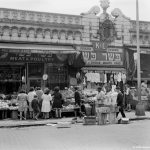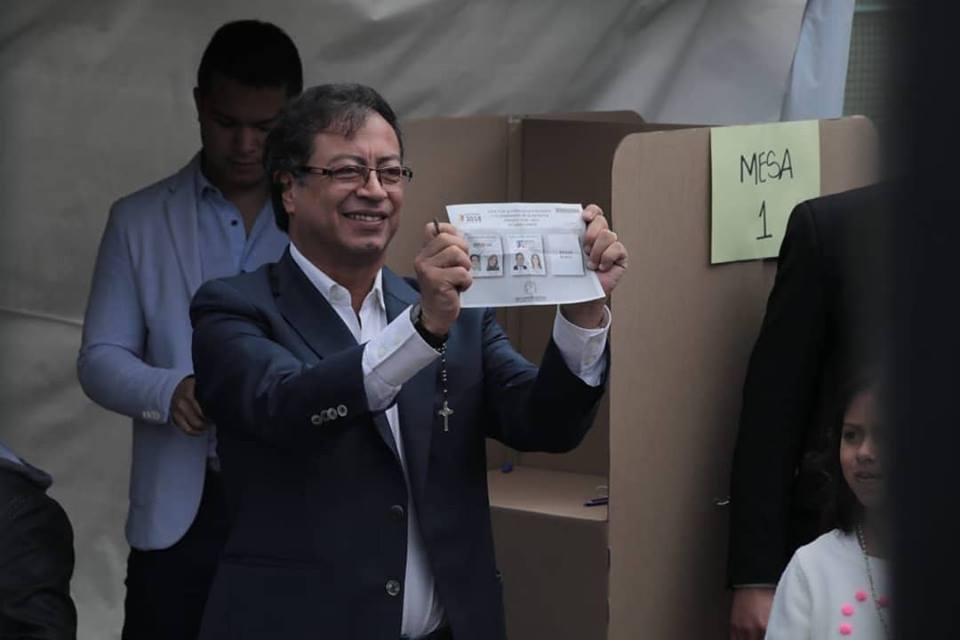BOGOTÀ, Colombia (ViaNews) – In the 2018 Colombian Presidential Elections held on June 10, Iván Duque was elected president with a 12% advantage over his opponent, Gustavo Petro. 10 million Colombians voted for Iván Duque and 8 million votes were casted for his opponent. Such great amount of voters for Gustavo Petro, not belonging to the Colombian ruling class, may be the sign of a changing Colombia.

We may be witnessing the surging of a new era in Colombia. Similar to what could have been under the ruling of Jorge Eliécer Gaitán in 1950, should he have not been killed by four revolver bullets. His assassination started a popular riot which ended with over 2.000 deaths in one day in Bogotá and started a 70-year-long war. The intellectual author of his murder is still a very well kept secret.

Understanding the historical background
Since the second half of 19th century, Colombia had been ruled by two parties, the Liberals and the Conservatives, both of which excluded the great majority of Colombians: the working class, the indigenous, the women, the descendants of the slaves and the peasants. Those parties shifted their governing tasks from one to the other every four years, accumulating wealth and land for the few families which conform them and owned the country.
Then, after 100 years, after the World War Two, a leader of the Liberal Party, Jorge Eliécer Gaitán changed the paradigm and his words were listened, arousing the enthusiasm of the ever-postponed people.
Frightening his own Liberal Party leaders and his classical opponents -the Conservative Party- Gaitan, a young lawyer with a charismatic personality, talking about a new era for everyone, gained followers and momentum, especially through broadcasted public speeches, two years before the 1950 elections.

It was 1948. Berlin was blockaded by the Soviets, Mahatma Gandhi was assassinated, the United Nations adopted the Universal Declaration of Human Rights, the Apartheid begun in South Africa and the State of Israel was created.
It was April 9 in Bogotá, Colombia. The US had called for an American countries conference to found the O.A.S. (Organization of American States) and U.S. General George C. Marshall, Secretary of State was leading the conference of all country´s foreign affairs ministers.
In parallel with the said conference, Latin American Youth Conference had been called and financed by Argentinean nationalistic President Juan Domingo Perón. A 22 year young unbearded Fidel Castro was representing Cuba and walking the streets of Bogotá.

The late Nobel Prize winner, journalist and novelist Gabriel García Márquez was also there.
When going to lunch with several friends, the certainly future president of Colombia, the lawyer Jorge Eliécer Gaitán had been killed, apparently by a single gunman, in downtown Bogotá.
Three blocks away from there, Gabriel García Marquez, journalist and Nobel Prize winner, then 21, was having lunch at his boarding house, as he tells in his autobiography “Vivir para contarla” (Living to Tell the Tale) (free abridged translation follows)
“They had yet not served the soup when Wilfrido Mathiew came and stood in horror at my table.
“The country is messed up,” he told me. “They just killed Gaitán in front of El Gato Negro”
<...>
A woman in a black shawl and espadrilles, who sold trinkets in the area, held a bloody handkerchief and growled:
“Sons of bitches, they went and killed him”
<...>
Gaitan had left his office with several friends but no bodyguard. Mendoza, one of his friends, took him by his arm.
“What I wanted to tell you isn´t important anymore,” he said. Gaitán covered his face with his arm and Mendoza heard the first shot, before seeing in front of them the man that pointed the revolver with professional coolness, and shot three times to the head of the leader. A few seconds later, they spoke of a fourth shot and maybe a fifth.

<...>
A few policemen on duty had locked the alleged gunman inside the Nueva Granada pharmacy to protect him from the enraged crowd. A tall man, very dubious of himself, in an impeccable grey suit, incited them with well-calculated shouted orders. The orders were immediately accepted, the owner of the pharmacy raised the steel curtains fearing for his life. The attacker, clinging to a police officer, succumbed to panic before the angry groups that rushed against him.
“Agent,” he begged almost without a voice, “don’t let them kill me.”

<...>
The never-identified man in grey continued to direct actions:
-To the palace, to the palace.
When the corpse arrived, it only had one shoe and the underpants.
<...>
Fifty years later, I still have this fixed image of the tall white man who seemed to instigate the crowd in front of the pharmacy, and I haven’t found him in any of the very many pieces I have read about this day. He was very near to me, with a grey suit, a very white skin, and a perfect millimetric control of his actions. So much impressed was I, that I observed him until he was picked up by a very new car, as soon as the body of the murderer was taken away.

Since then, he seemed to have vanished from historical memory. Even of my memory, until, many years later when already a journalist, I was assaulted by the idea that this man in the grey suit had been able to have a false murderer killed, in order to save the identity of the real Jorge Eliécer Gaitán murderers.”
Gabriel García Marquez autobiography “Vivir para contarla” (Living to Tell the Tale) (free abridged translation)

The people of Bogotá came down from the surrounding shanty towns and the city was destroyed. At least 2,000 dead to the hands of the Colombian military were officially counted. The government blamed the Soviet Union and broke diplomatic relations.
What’s happening today
Followers of Gaitán started a guerrilla movement which lasted until peace talks succeeded in 2017. 70 years of war. The guerrillas have rendered their weapons, and they are still being attacked and killed by right-wing paramilitaries. The war is still on.
After the June elections results, Gustavo Petro, ex-guerrillero from the M-19 movement twitted:
Gustavo Petro @petrogustavo – “Which defeat? Eight million free Colombians standing. There’s no defeat here. For now we won’t be government.”
Cuál derrota. Ocho millones de colombianos y colombianas libres en pie. Aquí no hay derrota. Por ahora no seremos gobierno. https://t.co/oiEhxu2xPT
— Gustavo Petro (@petrogustavo) June 17, 2018
During his presidential campaign, Gustavo Petro was assaulted, apparently with firearms. There are two (Spanish spoken) YouTube videos, one shot from the inside Petro´s SUB.
Several videos edited together







